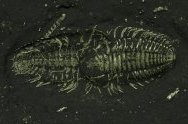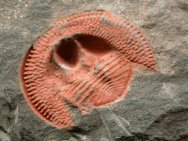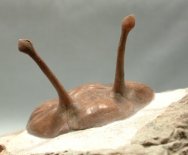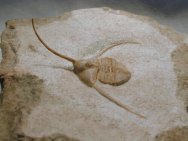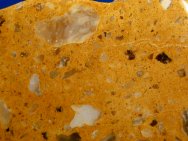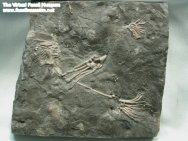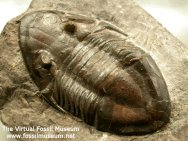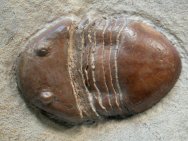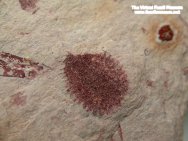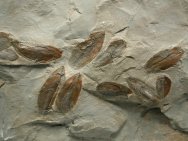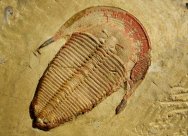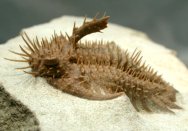Ordovician
Life
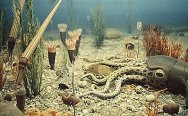 Metazoan
invertebrates dominated Ordovician life. While far less
famous
than the Cambrian Explosion,
the Ordovician encompassed a massive adaptive radiation where
marine faunal genera increased some
four fold. Carbonate shell-secreting organisms were particularly
successful, and competed with trilobites in continental shelf
communities. These included appearances and radiations of corals,
articulate brachiopods, bivalves, cystoids, gastropods, nautiloid
cephalopods, bryozoa and crinoids. The competition and the
spread of fiercer and larger predators provided selective
pressures
on trilobites, resulting in exotic forms from a trilobite evolutionary
arms race. Reef building came to be dominated by corals.
Graptolites thrived and Green algae from which plants probably
evolved became common. The first terrestrial plants resembling
liverworts appeared; spores from land plants have been identified
in uppermost Ordovician sediments. The first jawed fish appeared
late in the Ordovician. Mass marine life extinctions that
occurred
during in the late Ordovician (443.7 ± 1.5 million years
ago) claimed some 60% of genera, thereby creating niches for
benthic (bottom-dwelling)
and planktonic (floating, swimming) organisms. The fossils
below
are a representative sampling from the Ordovician fossil record. Metazoan
invertebrates dominated Ordovician life. While far less
famous
than the Cambrian Explosion,
the Ordovician encompassed a massive adaptive radiation where
marine faunal genera increased some
four fold. Carbonate shell-secreting organisms were particularly
successful, and competed with trilobites in continental shelf
communities. These included appearances and radiations of corals,
articulate brachiopods, bivalves, cystoids, gastropods, nautiloid
cephalopods, bryozoa and crinoids. The competition and the
spread of fiercer and larger predators provided selective
pressures
on trilobites, resulting in exotic forms from a trilobite evolutionary
arms race. Reef building came to be dominated by corals.
Graptolites thrived and Green algae from which plants probably
evolved became common. The first terrestrial plants resembling
liverworts appeared; spores from land plants have been identified
in uppermost Ordovician sediments. The first jawed fish appeared
late in the Ordovician. Mass marine life extinctions that
occurred
during in the late Ordovician (443.7 ± 1.5 million years
ago) claimed some 60% of genera, thereby creating niches for
benthic (bottom-dwelling)
and planktonic (floating, swimming) organisms. The fossils
below
are a representative sampling from the Ordovician fossil record.
|


